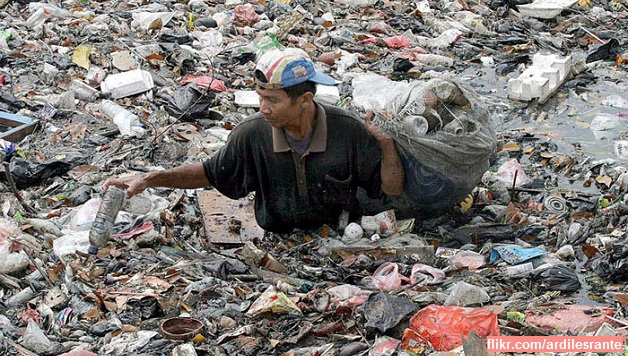Nearly 100 years ago, Upton Sinclair wrote The Jungle, a harrowing exposé of the meatpacking industry’s repugnant abuse of workers and animals. According to Eric Schlosser’s recent bestseller, Fast Food Nation, the working conditions, production methods, and sanitation in slaughterhouses of the 21st century have changed little since then.
Each year, 8 billion chickens and turkeys, 97 million hogs, 35 million cattle, 3 million sheep and lambs, and 1 million calves are slaughtered in the U.S. Most of these billions of animals are raised by “factory farming”, in which they are often caged or penned in extremely tight areas. In some cases, chickens grow around the bars of their cages. In order to maximize their growth and output of eggs, milk, and meat, animals are hooked up to food and hormone pumps for most of the day.
The hormones fed to animals show up in the meat and dairy products people consume, sometimes inducing puberty in very young children. In addition, meatpacking factories, animal waste, and unregulated drug use has led to severe water and air pollution. Contaminated water runoffs have affected ground water reserves and the irrigation of fruit and vegetable farms.. So even a vegetarian diet cannot avoid the perils of the meat industry.
The Workers
The slaughtering, stripping, cleaning, and packing of meat is incredibly dangerous for workers, whose industrial injury rate is three times the national average. Meatpacking has continuously topped the charts as the most dangerous job in the U.S. for the past century, with 540 deaths a year – one ninth of all U.S. worker deaths – and countless serious injuries.
The bosses constantly speed up the conveyor belts, which they run 24 hours a day. Workers carve side-by-side, wielding enormous knives, doing monotonous cuts at neck-breaking speed for hours at a time. The factories are extremely loud, rendering warning calls useless, and visibility is poor due to the carcasses moving at head level from one end of the factory to the other. The chemicals used are highly toxic, yet workers are provided little protection. Despicably, the carvers and cleaners wade in blood sometimes up to their waists!
Mega-meat corporations such as Con-Agra, IBP, and Excel exert enormous political influence through powerful lobbying groups that fight safety regulations and their enforcement. Consequently, it is common for workplace injuries not to be compensated and for injured employees to lose their jobs due to their reduced abilities.
Factory farming has had devastating consequences for surrounding communities. For example, the massive quantities of cow manure from cattle ranges are not processed in treatment plants like human waste. Instead, it is dumped into huge pools of excrement that the industry fondly calls “lagoons.” These lagoons permeate slaughterhouse towns with an unavoidable, nauseating odor.
In most slaughterhouse towns, the main employer is the meat packing industry, offering only low-paying, dead-end jobs. “Crime, poverty, drug abuse, and homelessness have lately taken root in towns where you’d least expect to find them. The effects of this new meatpacking regime have become as inescapable as the odors that drift from its feedlots, rendering plants, and pools of slaughterhouse waste.” (Schlosser, p. 149)
And What Do We Get?
The unprecedented centralization of the meat industry in recent years has accelerated the spread of dangerous pathogens. A 1996 USDA national study found that “7.5% of the ground beef samples taken at processing plants were contaminated with Salmonella, 11.7% were contaminated with Staphylococcus aureus, and 53.3% were contaminated with Clostridium perfringens.” These pathogens are harmful to humans, some deadly. Since 1993, when Jack in the Box was exposed for poisoning more than 700 people with E. coli, approximately half a million Americans, predominantly children, have been infected with that bacteria, resulting in hundreds of deaths.
Yet little has been done to combat the presence of pathogens in our meat. A mass campaign is needed to force the government to increase regulation on the industry. Meat workers, unions, animal rights activists, environmentalists, and consumer groups should form coalitions to fight this common enemy. A unionization drive by the workers would also ensure improvements in conditions for workers, consumers, animals, and the environment.
The barbaric nature of the meat industry is not unique to the way the capitalist system operates. Vegetarianism, nor even regulation, will stop the meat bosses from endangering workers, torturing animals, and poisoning our food and the environment. As long as large corporations are privately owned, they will remain locked into a system of competition that forces them to cut corners and resort to destructive practices to out-compete their rivals. The only viable solution is building the socialist movement to take these corporations into public ownership under workers’ democratic control and management.
Upton Sinclair wrote The Jungle, in part, to convince people of the need for socialism. We should feel indebted to his legacy and continue the struggle for a society based on meeting human need.


